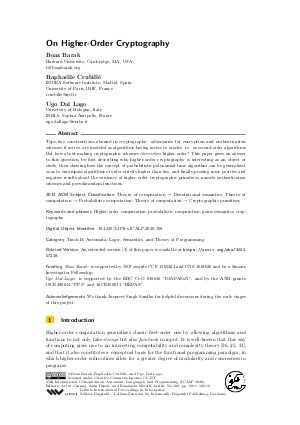LIPIcs.ICALP.2020.108.pdf
- Filesize: 0.62 MB
- 16 pages

 Creative Commons Attribution 3.0 Unported license
Creative Commons Attribution 3.0 Unported license
































Feedback for Dagstuhl Publishing